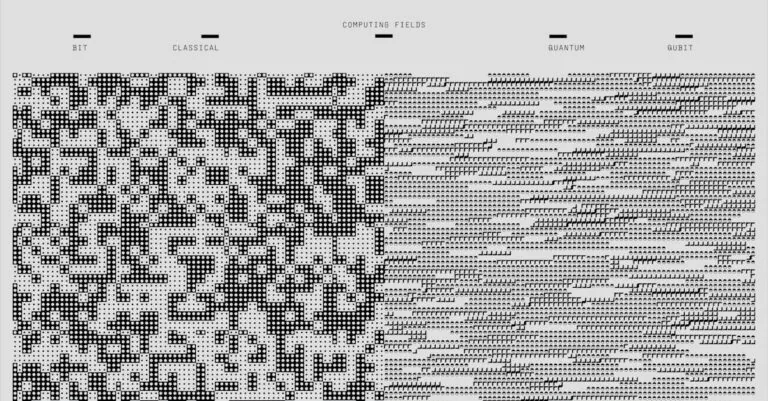In a world where cyber threats lurk around every digital corner, quantum computing is like a superhero ready to save the day—if only it could find its cape. This cutting-edge technology promises to revolutionize cybersecurity, making it tougher for hackers to crack codes than it is for a cat to resist a laser pointer. With its ability to process information at lightning speed, quantum computing could turn the tables on cybercriminals, leaving them scratching their heads and wondering what went wrong.
But what does this mean for the average person? As quantum computers inch closer to reality, understanding their potential in the realm of cybersecurity becomes crucial. It’s not just about fancy science jargon; it’s about protecting sensitive data and ensuring online safety. So buckle up as we dive into the quirky yet fascinating world of quantum computing and its game-changing impact on cybersecurity.
Table of Contents
ToggleOverview of Quantum Computing
Quantum computing significantly alters how data processing occurs. This technology relies on the principles of quantum mechanics to execute complex calculations much faster than classical computers.
What Is Quantum Computing?
Quantum computing leverages quantum bits or qubits, creating a distinct computational model. Unlike traditional bits, qubits can exist in multiple states simultaneously due to superposition. This feature enables quantum computers to analyze vast data sets quickly and efficiently. They outperform classical systems, particularly in tasks involving encryption, optimization, and complex problem-solving. Many industries, including cybersecurity, stand to benefit from these advancements.
Key Principles of Quantum Mechanics
Quantum mechanics underpin quantum computing’s functionality. Key principles include superposition and entanglement. Superposition allows qubits to be in multiple states, facilitating diverse calculations at once. Entanglement enables qubits to be interconnected, so the state of one instantly affects another, regardless of distance. These principles contribute to the remarkable processing power of quantum systems. Applications optimized by quantum computing include secure communication methods and advanced cryptographic techniques.
Impact of Quantum Computing on Cybersecurity
Quantum computing presents unique challenges and opportunities for cybersecurity. As it evolves, understanding its implications becomes vital for protecting sensitive data.
Threats to Current Cryptographic Systems
Current cryptographic systems rely on complex algorithms that secure data from unauthorized access. Quantum computers possess the ability to break these algorithms through advanced calculations. For example, Shor’s algorithm enables rapid factorization of large integers, compromising widely used encryption methods like RSA. Consequently, this poses a direct threat to financial transactions, confidential communications, and personal information security. Organizations must acknowledge that quantum computing can render existing protection methods ineffective, emphasizing the urgency for new solutions.
New Opportunities for Cybersecurity
Quantum computing also opens new avenues for enhancing cybersecurity. Quantum key distribution (QKD) enables secure communication by detecting eavesdroppers and protecting data integrity. By utilizing principles of quantum mechanics, QKD allows the creation of secret keys that are inherently secure from interception. Additionally, advancements in quantum-resistant algorithms are underway, which aim to develop cryptographic techniques resilient against quantum threats. Organizations can leverage these innovations to build more robust security measures, ensuring protection against future cyber risks.
Quantum-Safe Cryptography
Quantum-safe cryptography addresses the vulnerabilities of conventional cryptographic systems in the age of quantum computing. Its development is essential for ensuring data security against emerging quantum threats.
Understanding Post-Quantum Cryptography
Post-quantum cryptography focuses on developing algorithms that remain secure against the capabilities of quantum computers. Existing encryption methods, such as RSA and ECC, face risks from quantum algorithms like Shor’s algorithm. Research in this area aims to create robust systems that utilize mathematical problems difficult for quantum systems to solve. Lattice-based problems and hash-based algorithms present promising alternatives, enabling resilience against quantum attacks. Implementing these algorithms ensures continued protection for sensitive data in various applications.
Leading Quantum-Safe Algorithms
Several algorithms lead the charge in quantum-safe cryptography. Lattice-based algorithms, such as New Hope and NTRUEncrypt, showcase resilience against quantum computing threats. Another leading contender is the hash-based signature scheme XMSS, which leverages the security of hash functions for accurate authentication. Code-based and multivariate polynomial-based approaches also present strong candidates due to their complexity and difficulty in being solved by quantum machines. Continued research and standardization efforts by organizations, including NIST, help align industries on effective strategies for adopting these quantum-safe solutions.
The Future of Quantum Computing in Cybersecurity
Quantum computing promises to reshape cybersecurity, offering advanced solutions to combat escalating cyber threats. The rapid evolution of this technology underlines its importance in securing sensitive information.
Industry Trends and Developments
Organizations increasingly recognize the necessity of integrating quantum solutions into their cybersecurity frameworks. Quantum key distribution (QKD) becomes a focal point, providing unmatched security by detecting eavesdroppers during data transmissions. Researchers actively explore quantum-resistant algorithms, ensuring existing systems withstand the challenges posed by quantum computing. Various industries such as finance and healthcare invest significantly in these innovations to safeguard critical data. Moreover, collaborations are forming between tech companies and governments, aiming to establish standardized practices for quantum-safe cryptography.
Challenges to Implementation
Implementing quantum technology in cybersecurity faces significant hurdles. High costs associated with developing quantum infrastructure may deter investment for some organizations. Complexity in transitioning from classical to quantum systems presents another barrier, as it requires new skills and knowledge. Legacy systems lack compatibility with quantum methodologies, complicating the integration process. Additionally, limited awareness of quantum threats among stakeholders hinders timely action in adopting preventive measures. Addressing these challenges is crucial for realizing the full potential of quantum computing in enhancing cybersecurity.
Quantum computing stands at the forefront of a new era in cybersecurity. Its potential to revolutionize data protection is undeniable as it offers solutions to combat emerging cyber threats. By understanding and embracing this technology, organizations can better prepare for the challenges ahead.
As industries adapt to the quantum landscape, the focus on quantum-safe cryptography and secure communication methods will become increasingly vital. The ongoing research and development in this field will pave the way for stronger defenses against cyber attacks.
Investing in quantum solutions today will not only enhance security measures but also ensure the integrity of sensitive information in an ever-evolving digital world. Embracing these advancements is essential for safeguarding the future of cybersecurity.






